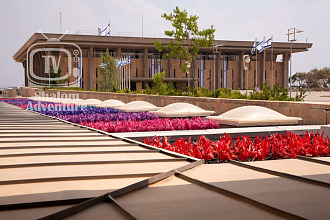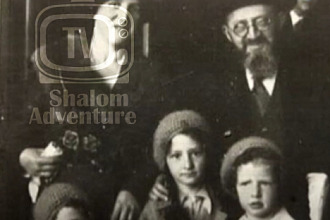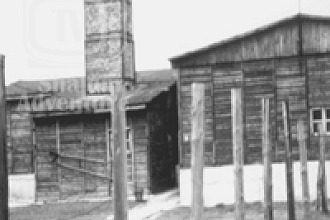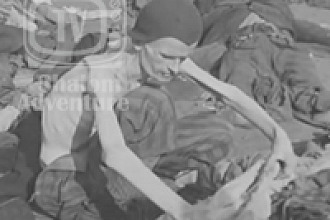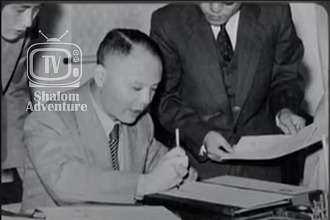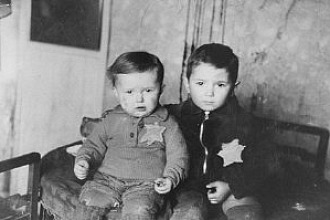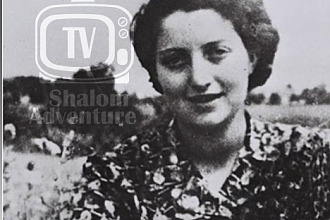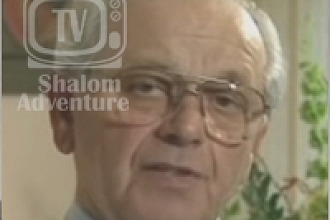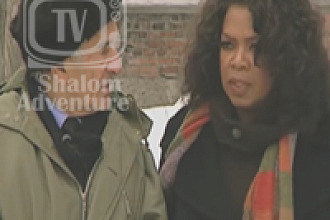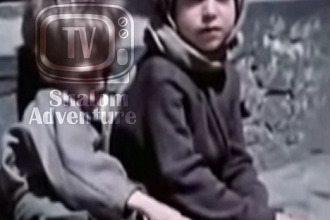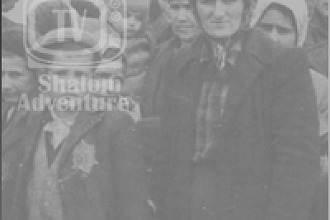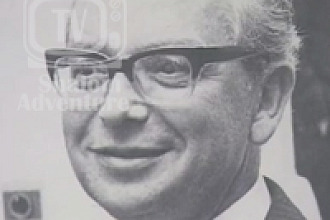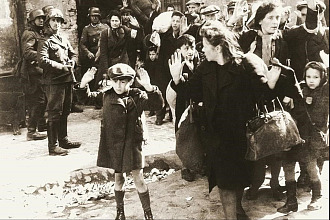When many people think of Europe, they think of beautiful architecture, delicious food, romantic getaways, and spectacular art. Not many people come to Europe to learn about the Holocaust and World War II.
But for people fascinated with this period of time, Europe has great museums dedicated to the history of the Jewish people and the Holocaust.
Adolf Hitler and the Nazi Germany regime murdered more than 6 million Jewish people representing two thirds of the Jewish people in Europe. This includes upwards of 90 percent of the Jewry in Poland, Germany, Austria, the Baltic countries, and the Protectorate of Bohemia and Moravia, and significant percentages often exceeding 50 percent throughout the remainder of the continent. The Nazis also targeted and murdered homosexuals, political opponents, Serbs, Slovenes, Soviet prisoners of war, Soviet Slavs, Freemasons, Jehovah's Witnesses, gypsies, the disabled or mentally impaired, and others deemed “inferior.”
The battle cry of the post-Holocaust years has been “never forget,” and today, many museums and memorials exist to honor those whose lives were sacrificed during the Holocaust.
Here are some of the best museums in Europe that honor the Holocaust:
Auschwitz I and Auschwitz II-Birkenau Camps(Oswiecim, Poland)
The Nazi regime sectioned off areas of the cities where only Jews were allowed to live. From these ghettos, the Nazis started mass transportation of Jews away from cities and into labor camps, where Jews lived and worked. From there, many were transported to extermination camps in Eastern Europe.
The Nazis set up Auschwitz in the Poland town of Oswiecim, just 40 miles (65 km) away from the city of Krakow. Auschwitz was the largest camp complex the Nazis created during the Holocaust. During its existence, about 1.3 million people were killed here.
Auschwitz consists of two camps, Auschwitz I and Auschwitz II Birkenau. Auschwitz I was designed to be more of a concentration camp. Prisoners here lived in horribly inhumane conditions, worked all day every day, and many starved to death or died of illness. There were 22 brick barrack units where prisoners slept. Today, visitors can visit the insides of these barracks. Most of them are dedicated to the various countries in Europe and have exhibits showing each country's part in the war. For example there is a barrack dedicated to France, Netherlands, Belgium, and more.
Visitors then take a shuttle bus to Auschwitz II Birkenau. This was erected specifically as an extermination camp. Much of the camp has been left intact so visitors can get a sense of the house of horrors it was. There are the gas chambers, where Nazis used Zyklon B gas to mass murder prisoners. There are also remnants of the crematoriums, where prisoners were burned in giant ovens.
A trip to this camp is a must do for any person of Jewish ethnicity or somebody who wants to know more about this time period.
Anne Frank House(Amsterdam, Netherlands)
It seems that just about everyone read the story The Diary of Anne Frank when they were in school. Anne Frank was a young Jewish girl living in Germany during World War II. As the Nazis gained control over Germany, her father Otto Frank, a successful businessman, decided it was no longer safe to live in Germany. He moved the family to Amsterdam in 1933, where Jews were still able to live safely.
In 1940, the Germans invaded The Netherlands and many Jewish families began getting deported. The Frank family went into hiding in a secret apartment located above the factory where Otto Frank worked. From 1942 until 1944, the Frank family along with several others remained hidden in secret. Anne Frank kept a diary telling about her life. In 1944, the family was found by Nazis and taken to Auschwitz. Anne's mother died at Auschwitz from starvation. Anne and her sister were transferred to another camp, Bergen Belsen, where they died from typhus. Otto Frank was the only person to survive.
Today visitors can take a trip to the Anne Frank House. The museum includes the factory premises of Otto Frank. Visitors are first taken through the factory section. Next, visitors go through the famous staircase that hid the annex from view.
The apartment is left in its original condition. It was Otto Frank's wish to not alter the state of the apartment in any way. The apartment does not have furniture or other belongings in it because possessions were taken from the Jews, never to be returned. There are several exhibits in the museum including photographs, artifacts, and quotes from her diary.
The Anne Frank House is currently undergoing a major renovation. A new building is being added with interactive exhibits. If you have not had a chance to visit this museum, now is a great time to go.
Memorial de la Shoah(Paris, France)
France was also greatly affected by the Holocaust. During this time period more than 76,000 Jewish people were deported from France. The Memorial de la Shoah - “Holocaust Museum” in French - pays tribute to the French Jewry. It is located in the Marais neighborhood, an upscale area of Paris where Jews used to thrive in number.
The entryway of the museum has names engraved into the walls of all the Jews from France that were deported. Large black columns in the courtyard represent the chimneys of concentration camps.
In the basement of the memorial is a large Star of David, beautifully carved in marble. Ashes from the victims of the Holocaust are buried underneath the star.
There are many exhibits at the Memorial de la Shoah giving an introduction to Judaism and the history of Jews in Europe. The exhibits cover the rise of Nazism, deportations, and concentration camps across Europe.
"Righteous Among the Nations" is an award given to non-Jewish people who bravely helped save Jews during the Holocaust. At Memorial de la Shoah, the Wall of the Righteous lists French citizens who have been recognized with this award. There are over 3,000 people listed on the wall.
Josefov (Prague, Czech Republic)
One of the best things about Prague is that it is one of the few cities that did not get invaded or bombed during the war. It has been left intact since before the war. Visitors to the city are captivated by its beautiful romance and its charm. This city is exactly how old school Europe used to look.
Jews in Prague were sequestered to the Jewish Quarter, here called the Josefov. In many cities across Europe there were sections where Jews were only allowed to live.
During the war, Adolf Hitler actually wanted the Jewish Quarter to be preserved. His plan was to dedicate it into a museum called "Museum of an Extinct Race." He even had Jewish artifacts sent from other countries into Prague in order to create his museum of what he believed would be the extermination of the Jewish people.
All of this combines to make the Jewish Quarter in Prague one of the best places to experience Jewish culture. Josefov consists of six Jewish synagogues: Pinkas Synagogue, Old New Synagogue, High Synagogue, Klaus Synagogue, Maisel Synagogue, and Spanish Synagogue. Each synagogue is unique with beautiful architecture, artifacts and exhibits relating to Jews and the Holocaust.
Also nearby is the Old Jewish Cemetery and the Jewish Town Hall. All of these fascinating sites can be visited with one ticket.
There are many great museums in Europe. Other museums, such as the Jewish Museum of Berlin, the Judenplatz Museum in Vienna, the Imperial War Museum in London, the Polin Museum of History in Warsaw, the Galacia Jewish Museum in Krakow, and the Jewish Museums of Greece and Thessaloniki generally focus more on the overall history of the Jews in Europe, though they occasionally have special exhibits pertaining to the Holocaust which are worth checking out if the exhibit coincides with your European travels. Even if they don’t have a special exhibit at the time you plan your travels, they are still great museums giving you a background in Jewish history that when coupled with a Holocaust museum experience, give you a richer context for that time period.
Another museum, the Museum of Occupations and Freedom Fights, previously known as the Museum of Genocide Victims in Vilnius, Lithuania, occasionally spotlights the Holocaust of the Second World War, but transcends that one time period inviting visitors to also learn about the history of Russian genocides and other human rights atrocities.
Whether you are Jewish, a history buff, or just want to gain an appreciation and understanding for this time in history, these museums will help you learn more about the Holocaust and Jewish culture. Let us never forget.
Picture originally found here






